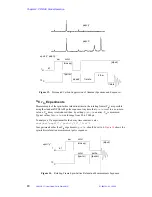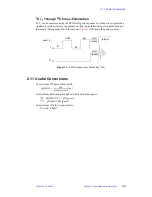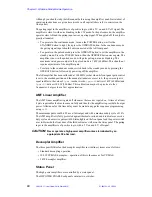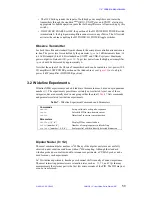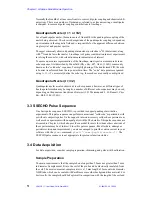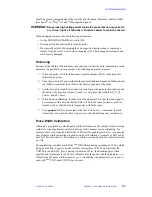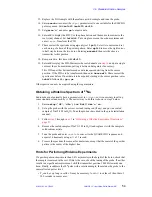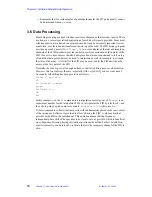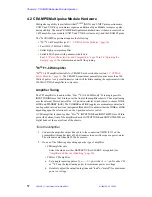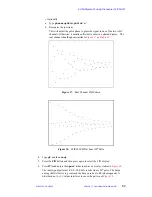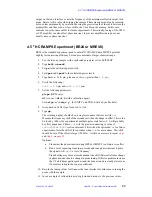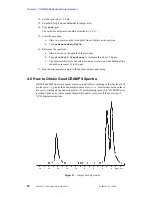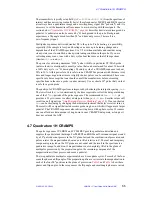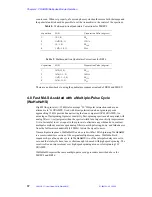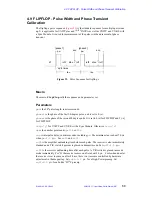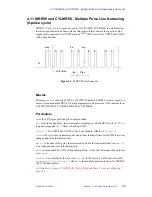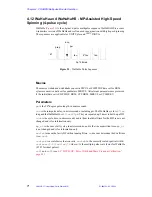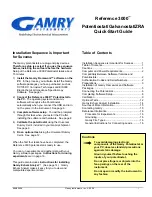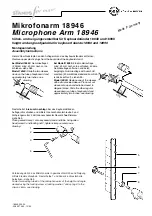
01-999162-00 C0402
VNMR 6.1C User Guide: Solid-State NMR
56
Chapter 4.
CRAMPS/Multipulse Module Operation
Sections in this chapter:
• 4.1 “Introduction to Multipulse Experiments,” this page
• 4.2 “CRAMPS/Multipulse Module Hardware,” page 57
• 4.3 “Multipulse Experiments and User Library,” page 60
• 4.4 “Multipulse Tune-Up Procedure (FLIPFLOP),” page 60
• 4.5 “
H CRAMPS Experiment (BR24 or MREV8),” page 64
• 4.6 “How to Obtain Good CRAMPS Spectra,” page 65
• 4.7 “Quadrature 1H CRAMPS,” page 66
• 4.8 “Fast MAS Assisted with a Multiple-Pulse Cycle (WaHuHaHS),” page 67
• 4.9 “FLIPFLOP - Pulse Width and Phase Transient Calibration,” page 68
• 4.10 “BR24 and CYLBR24 - Multiple Pulse Line Narrowing (24-pulse cycle),” page
• 4.11 “MREV8 and CYLMREV - Multiple Pulse Line Narrowing (8-pulse cycle),”
• 4.12 “WaHuHa and WaHuHaHS - MP-Assisted High-Speed Spinning (4-pulse
4.1 Introduction to Multipulse Experiments
Multipulse describes a class of experiments that require the interleaving pulses with the
acquisition of the data points of the FID. Combined Rotation and Multipulse, CRAMPS,
is the most common
1
H high-resolution experiment. CRAMPS is used to obtain high-
resolution MAS
1
H spectra of organic materials. The CRAMPS pulse sequence uses the
BR24 multiple-pulse cycle. A BR24 multiple-pulse cycle applies 24
1
H 90
o
pulses in the
dwell time between the acquisition of complex data points. Multiple-pulse cycles such as
BR24 removes strong
1
H-
1
H dipolar interactions that broaden the spectra of organic
materials. Slow-spinning MAS averages the
1
H chemical shift tensor to yield typical line
widths of 0.25 ppm to 3 ppm.
Hardware for the
1
H CRAMPS experiment is provided by the
1
H CRAMPS/Multipulse
Module or by a Full Solids setup and is described in this chapter along with setup
procedures.
Multiple-pulse cycles are often employed without interleaved data acquisition in many
solids sequences for the purpose of decoupling and recoupling, or during the evolution
period in two-dimensional experiments. This chapter describes the procedures used to
adjust the pulsewidth and phase transient for CRAMPS and other multiple-pulse cycle
experiments. The tune-up sequences described in section


